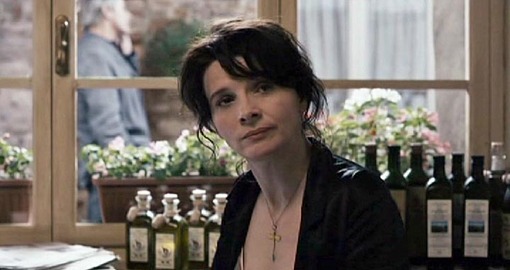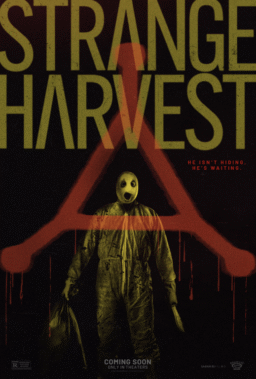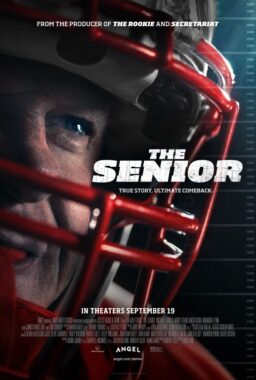“It’s enigmatic and obvious, exasperating and beguiling, heavy-handed and understated, witty and poignant, all at once.”
— Alex Ramon, Boycotting Trends
What I like most about Abbas Kiarostami‘s “Certified Copy” is its slipperiness. The Tuscan textures are ravishing (it takes place over the course of an afternoon in and around the village of Lucignano — or does it?), Juliette Binoche and William Shimell are easy on they eyes and ears (good thing, too, since the movie is practically one long conversation — or is it?), but for me the most enjoyable thing about it is the way the story and characters keep subtly (and not-so-subtly) shifting, refusing to be pinned down. I was fearing one of those overly literalized Kiarostami “button” endings, but this time (as Michael Sicinski observes in his impressive, ambitious essay at MUBI), the thesis statement is placed at the front of the film and it gets slipperier from there:
“Certified Copy” operates almost in reverse of most thematically inclined works of art, which plunge us into a falsely desultory universe and gradually reveal their master interpretive passkey. Kiarostami’s film presents a concept, fully formed and cogent, and allows the rest of the film to set to work on that concept, breaking it into Heisenbergian particles, then bringing it back into solid shape, and on and on.
It begins (after a brief apology for the guest speaker’s tardiness) with a lecture by James Miller (played by operatic baritone Shimell), a British author who has just published an Italian translation of his book, “Certified Copy” — a treatise questioning the value of authenticity in art. (He says he’d wanted to call it “Forget the Original, Just Get a Good Copy.”) What does that have to do with the rest of the movie? Maybe not much. It depends on your interpretation. I have mine (and I’m not sure I can precisely answer my own question), but what’s even more intriguing to me is that others who have seen the film and written about it don’t necessarily agree on some of the fundamentals — like whether Binoche’s character has a name (some say it’s “Elle,” others say she’s mysteriously nameless) or what her relationship is/was to James. [Turns out “Elle” is both a name and a pronoun in French.]
Many comparisons have been drawn — mostly to Roberto Rossellini‘s “Viaggio in Italia (1954), Michelangelo Antonioni‘s “L’Avventura (1960), Wong Kar-Wai‘s “In the Mood for Love” and Richard Linklater‘s romantic gabfests, “Before Sunrise” (1995) and “Before Sunset” (2004), but also to Alain Resnais‘ and Alain Robbe-Grillet’s “Last Year at Marienbad and late Buñuel (“The Discreet Charm of the Bourgeoisie,” “The Phantom of Liberty,” “That Obscure Object of Desire“)…
(Here you may want to stop reading so as not to prejudice your own experience of “Certified Copy,” which is now playing in “selected theaters,” as they say, and will be available on demand beginning March 23.)
All of the comparisons are apt in their way (more than one critic has noted that the movie — Kiarostami’s first made outside of Iran — is his own “certified copy” of a mid-century European art film): Like Rossellini’s film it recounts a decayed/decaying marriage (though just whose is up for debate); like Antonioni’s, the characters’ relationships metamorphose and the story contains intriguing elisions; like Wong’s, it is a chronicle of an unlikely romance; like Linklater’s, it consists mainly of continuous conversation between a man and a woman, ranging from the philosophical to the personal, in a picturesque European setting; like Resnais’ and Robbe-Grillet’s, it revolves around the mystery of how these people know each other; and like the Buñuel films it quietly resists any attempts on the viewer’s part to read it literally or to supply plausible explanations for the characters’ behavior.

Oh, you may think you’ve got it figured out every once in a while — the movie will throw you an obvious bone now and again — but… no. And, as the Coens put it, even if you could explain it, where would that get you? Matt Cornell articulated his — and my — sentiments beautifully in a comment on Sicinski‘s piece:
I’m not that much interested in the “puzzle” aspect of the movie, because I think Kiarostami’s formal playfulness (and it IS playful) is employed to explore the uncanny– to give greater emotional texture and intellectual depth that would otherwise be impossible in a literal-minded or linear film.
I overheard people discussing the movie as I left, and many seemed fixated on solving it logically. I blame movies like “The Matrix,” “Inception” & “Enter the Void” for taking the virtual reality/dream film concept and then treating it with such narrative obviousness and expository literal-mindedness. In those films, you’re only left fussing over the complex “rules,” much like a video game. It becomes a game or a puzzle for the viewer. PK Dick’s work has often been misused in this way…
I think my favorite scene (because it’s one of the funniest) comes during an argument about a fountain sculpture in a village square. Elle (I’m going to call her that because, even though I don’t remember her name from watching the movie, that’s what she’s called in the New York Times review, and it’s easier to write than “Binoche’s character”) says she likes the sculpture. Not as a work of art; she just likes the subject, the way the woman rests her head on the man’s shoulder. The funny thing is, we haven’t seen anything above the male figure’s genitals, and we never do get a very clear look at the fountain, except when it appears in the background (or a mirror reflection).

Elle solicits the opinion of an older couple, a pair of French tourists, and it’s here, just before the scene with the film’s most jarring shift, that the movie tips its hand a bit: the gentleman (old enough to be James’s father), who offers him some romantic advice, suggesting he can undo the emotional damage of the afternoon with a simple gesture (putting his hand on her shoulder), is played by Jean-Claude Carriere, co-author with Buñuel of the films mentioned above. (And co-writer of “Birth,” too.) “I don’t know what happened between you… and I cannot know,” he says. “And I do not care. It does not concern me. But all your problems could be erased with a simple gesture.” Can a well-timed, well-judged gesture (even if it’s premeditated) cancel out the consequences of a day (or, perhaps, years) of intellectual and emotional arguments? There’s a question worth considering…
At this point in the movie (which I’ve seen only once), I was thinking of “That Obscure Object of Desire,” in which Buñuel cast two actresses as a single character and switched them in and out at random. Although Elle had offered an explanation for the first bit of slipperiness — a cafe proprietress had mistaken her and James for a married couple and she didn’t bother to correct the error — the role-playing (if that’s what it is) has just begun.
Here’s where the wrinkles get deeper. Sicinski writes that, having seen “Certified Copy” a second time — “that is, repeated, viewed with experience” — he has reached a conclusion: These two people aren’t just inventing scenes from a marriage (like, say, George and Martha in “Who’s Afraid of Virginia Woolf?”)…
… I must admit to being mystified by the frequency with which I’ve seen “Certified Copy” referred to as a “game,” in which Binoche and Shimell are described as strangers who, for whatever reason, have decided to pretend to be a married couple. This is one way to avoid all the most complicated and maddening aspects of this film, and to take the theme of copy / original at its face-value worst. […]
So, to make it absolutely clear: this is a film about a married couple, and although Kiarostami orchestrates the film in something pretty close to real time, we are not watching a series of linear events. To borrow from David Bordwell, the syuzhet of “Certified Copy” is not the same as its fabula. In other words, the plotline, the series of events depicted onscreen are not the temporally defined, single-trajectory story of “the marriage of the Millers.” As Bordwell tells us, art films frequently pry plot and story, syuzhet and fabula apart, this being the very aesthetic “work” they perform on their topic of choice.
In the comments, Ignatiy Vishnevetsky says that he reads the movie quite differently:
Let the “Certified Copy” debate begin / continue: for me, they are most certainly strangers, and the film becomes more complex if they are perceived as such, and is merely a “Last Year at Marienbad“-style puzzlebox (and I write this as a Resnaisian, albeit one that tends to think of “Marienbad” as one of his weakest films) if they are in fact a real married couple.
(Ignatiy has more to say about the film in his review on “Ebert Presents At the Movies.”)

So, I’ll just chime in here to say that I think these are both good answers to the wrong question. Or, one that isn’t worth answering definitively, because it offers only binary options, and the movie requires that you hold multiple possibilities in your head at the same time. What you see is what happens in the movie. There is no “reality” apart from what is there. (Mr. Scorsese, please: “Cinema is a matter of what’s in the frame and what’s out.”) You don’t look at “Discreet Charm of the Bourgeoisie” and say: “Well, that dinner party is real, but when they’re walking down the road it’s a fantasy.” You don’t look at “That Obscure Object of Desire” and say, “The scenes with Carole Bouquet are the real ones, and the scenes with Ángela Molina are imaginary.” Where would that get you? You would be denying the essential movieness of the experience.
Sicinski has his reasons, well-argued, for his point of view, but I think he’s closer to the mark when he cites Bordwell and says that the events depicted in the movie just don’t rigorously correspond to what we experience as viewers watching the movie. Look at James’s entrance: Late for his own lecture, he enters from the rear of the room and is immediately stopped by a woman and a boy, for whom he stops to sign a copy of his book — until the host asks people to hold off until afterwards. That woman is Elle and the boy is her son. How do we square that with the moment in the trattoria when James grills Elle (both of them adopting new, amped-up, soap-operatic acting styles) about the road accident she almost had when she dozed off at the wheel while their son was in the back seat? Well, we don’t. How can we? Why should we? They are married and not married, strangers and intimates. What’s unknown — that is, what is deliberately left out of the movie — is as important as what’s known. Perhaps, like Billy Pilgrim, these characters have come unstuck in time, or have slipped into multiple alternate universes (Glenn Kenny said the movie “can be seen as the first great science-fiction film of the year”).

What matters is not who is the original and who is the copy, but how the various thematic elements keep bouncing off one another. The scene in the square that I mentioned above is teeming with romantic possibilities and alternate scenarios we might follow: in addition to the unseen statue of the man with the woman’s head resting on his shoulder, there’s a boy and a girl (he has his arm, awkwardly, around her) sitting on the left of the fountain; members of a wedding party are in the background, getting photos taken; and, later, the older French couple appear — but only on the soundtrack at first (while we see Elle’s reflections in two mirrors), as the man is saying: “You know that we talk about it together, and you also know it was wrong. You’re wrong!” And it turns out he’s speaking not to his wife, as we are first led to believe, but to a party unknown on his mobile phone. The fight in the trattoria leads to a church and a very elderly couple, who guide us back to the steps of a pensione that, we’re told, has particular emotional significance for these two — though James does not remember it. (Echoes of the opening of Kubrick’s “Eyes Wide Shut” — her presence doesn’t quite register with him.)
I like the way GK describes the film here:
As it happens, though, “Certified Copy” isn’t really about what its characters are discussing; it’s about the changes enacted by the characters as the discussion continues, the emotional twists and turns that become more than emotional twists and turns. They end up actual transformations of the “reality” of the film itself.
And Brazilian critic Pablo Villaça offers a splendid analysis/appreciation on Roger Ebert’s Far-Flung Correspondents page:
Therefore, there is a third — and, I believe, more logical — possibility: the characters take on a different dynamic because they in fact become different individuals whose lives combine elements of both realities. And this alteration happens simply because it’s fundamental for the discussion Kiarostami proposes: that our perception about the characters (or about art in a general way) isn’t or shouldn’t be affected by the confirmation of its unreality. The ideas presented by the movie and its characters, as well as their personal issues, are dramatically efficient and relevant even though they are naturally false — and they are always false, since we are, after all, talking about a fiction, independently of the couple’s version presented by the movie.
However, in order to make this argument work, it was mandatory that the audience was caught by surprise by the changes the characters experience — and that’s where the director demonstrates his intelligence by establishing a consistent logic during the first hour of projection just to pull the rug under the public right after. In order to do that, Kiarostami conceives a narrative grounded on naturalism in its tiny details, from the writer’s embarrassed pauses when his jokes don’t make the audience laugh to the way Binoche hits her purse on his face when she removes it from the car seat so he can sit.
Likewise, the director invests in long scenes that, comprised from extensive and static shots, give a realistic rhythm to the conversations, which also reveal fluidity thanks to the minimalistic but precise performances of the main couple: observe, for example, how Binoche completes the joke Shimell was telling in order to prove a point or the way she interrupts a sentence to complain about a pedestrian who crossed the street in front of her car and you will certainly confirm the director’s strategy and his actor’s — especially by contrasting these moments with others that happen during the second half of the movie, when the performances become more intense and gimmicky, as we can observe when a lone tear is seen streaming down Binoche’s face or when Shimell treats a waiter with an aggressive arrogance.
(Not only is that last paragraph lovely — it’s one sentence! A long, fluid take.)

“Oh, for heaven’s sake, that’s an absurd interpretation. Look, it’s just not reasonable to expect us to feel the same way that that married couple do — not after 15 years. Things have changed — of course things have changed! — but not as ridiculously as you make out. Look, love’s still there — it just shows itself in different ways. And you’ve got to come to terms with that. Why can’t you understand it? I really don’t like having to explain the obvious to you.”
I chuckled at this speech James gives (in a medium close-up, facing the camera, with a wedding party out the window behind him) because it seemed to me that perhaps Kiarostami was addressing us, the audience, through the character. Maybe this is the movie’s “thesis statement” and not James’s opening speech (that Elle and her son don’t stick around for). “The obvious” is that what we’re seeing is what we’re seeing.
I don’t blame anybody for feeling that “Certified Copy” is irritating. It is. These characters become quite irritating as the movie goes on (I think Elle turns into a needy and emotionally solipsistic harridan, while Stephen Holden in the NYT writes: “Despite its modernist sensibility, there is little reason to be intimidated, unless you find the character of James abhorrent”). Roger Ebert, although he rates the film highly, describes it as “too clever by half, creating full-bodied characters but inserting them into a story that is thin soup.” I can’t really argue with that; I just found myself more intrigued than annoyed.
Perhaps a cynic (like me) might suggest that the whole original/copy text/subtext could apply to marriage and spouses in general. (“Unhappy marriages are all alike…”) After all, most people don’t get married because they’ve found they’re romantic ideal; they get married because they feel it’s time to get married and this was who they were with at the time they felt that way. (Or, in some cultures, their parents made the decision for them.) Is that what “Certified Copy” is implying, too? That it doesn’t matter if Elle and James are married because, even if they’re strangers, they might as well be married, given that they’ve imagined a past (future?) together? (By the way, the French title, “Copie Conforme,” is more resonant. “Certified” has bureaucratic overtones — as in a marriage license? — but “Conforme” [according to Google Translate!] has other meanings that might better fit the movie: true, standard, congruent, faithful.)
It’s possible that I’m giving “Certified Copy” the benefit of the doubt because doubt is where my interest lies. (I am passionate about Buñuel, “Birth” and “A Serious Man,” too.) Certainty is the enemy of art, and “Certified Copy” is nothing if not an old-fashioned “art film.”











